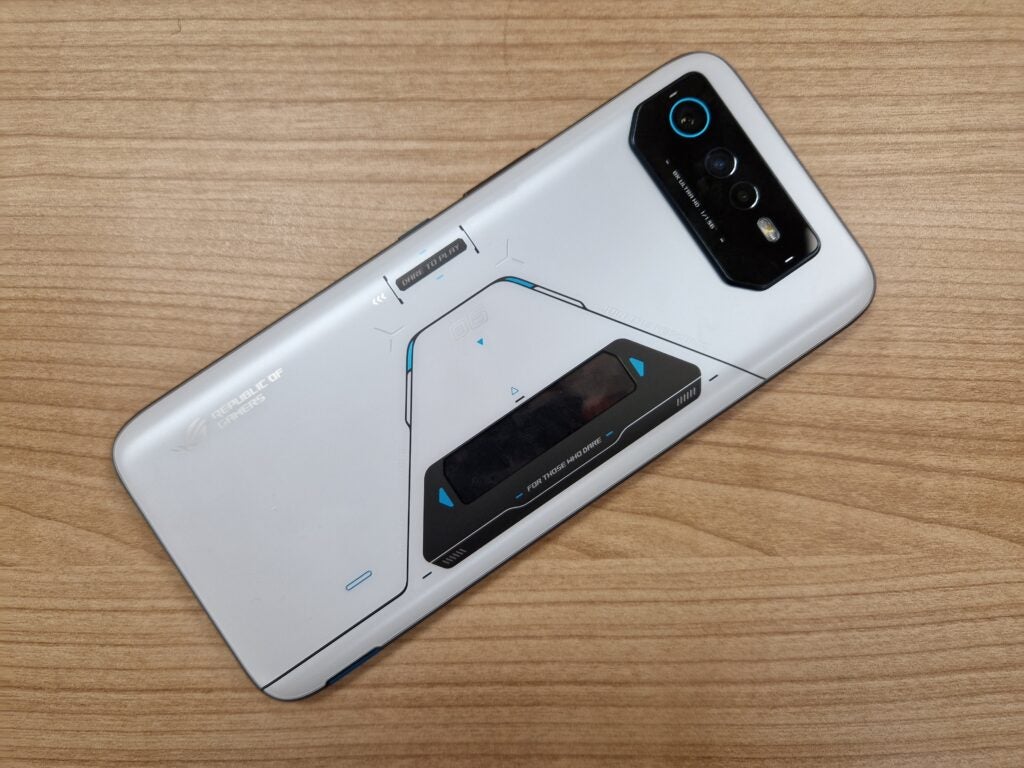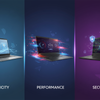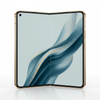Asus ROG Phone 6 Review: Obsessed With Gaming

Introduction
With incremental updates flowing one after the other, it's made the Asus ROG Phone series the top choice in the gaming genre. With Nubia's Redmagic and Black Shark gaming brands exiting the Indian market shortly after their debut, Asus ROG is the last true contender for high-end gaming smartphones in the Indian market.
Keep the winning formula, and Asus is in that unusual position of being able to tune it up every year without throwing big changes into the process. This is the reason why the ROG Phone still holds ground as the device of choice for seriously committed mobile gamers.
Price and Availability
The Asus ROG Phone 6 is priced at Rs 71,999 for the variant that packs 12GB of RAM and 256GB of internal storage. It will come in the following colors: Storm White, Phantom Black. For those who need more, there is the ROG Phone 6 Pro, which is priced at ₹89,999. This one gets an additional 2-inch OLED display on the back and bumps RAM to 18 gigs with 512 gigs of storage. Of course, that is a significant hike from the model of last year, which started at ₹57,999.
That puts it closer to the Pro variant of last year, which was priced at ₹79,999. The ROG Phone 6 does, therefore, have to live up to its asking price for its specific gaming niche target audience and also trails a bit behind in the Indian markets compared to its global launch in July 2022.
Design and Build Quality
It looks like there is an evolution in the design of Asus ROG Phone 6 rather than a revolution.Since then, Asus has gradually updated the design, so there's a limited number of noticeable shifts this year, with the polka dot effect placed just below the camera module making this one jut out a smidgen more this time around. There are also a couple of new customizable RGB elements of the back of the case: the familiar "fearless eye" logo and the one below the slogan "Dare to Play."
The back makes use of Gorilla Glass 3 on the PA's own rear panel, durable but a fingerprint junkie. The ROG Phone 6 measures in at 10.3mm in thickness and 239g in heft, so by no means is this an ultra-portable device for carrying around, let alone for daily use. It's quite huge and heavy to hold continuously, although an IPX4 rating saves it from water splashes. While still comfortably carrying an IPX4 rating against water splashes, with these upgrades, the rather significant heft of this phone might put down some users looking to adopt it as their main device.
Display and Audio
The Asus ROG Phone 6 has a 6.78-inch AMOLED-based screen with a 165Hz screen refresh rate and touches sampling at 720Hz, promising smooth performance while any game shines at this. Add to that a super-sharp and fully colored display, although it's slightly exacerbated in its default out-of-box mode. The screen also offers support for HDR10+ certification, ensuring high protection when streaming high-quality content via Netflix and YouTube.
Because the top and bottom thick bezels look like an out-and-out characteristic of an oversized early-2017 phone, these accommodate very powerful speakers that still sound top-notch. In fact, Asus states that these speakers have increased cubic space, leading to richer bass.
The speakers are indeed among the very best that you might find on any smartphone right now, making the ROG Phone 6 really a powerhouse when it boils down to audio.It also has a 3.5mm headphone jack for wired audio connections, which should please all its core gamers.
Performance and Software
The ROG Phone 6 comes packed with Qualcomm's Snapdragon 8+ Gen 1 processor, a significant upgrade from the Snapdragon 888+ in the artwork of ROG Phone 5s. Coupled with this is LPDDR5 RAM, UFS 3.1 storage, and a lot more, which enables it to be a performance beast not only while on paper but also even in reality—unbeatable in very many interfacial amenities and gaming opticals. The phone also supports several 5G bands, Wi-Fi 6, Bluetooth 5.2, and NFC, which makes it future-proof in terms of connectivity. The device runs on Android 12 software with ROG UI and Zen UI overlays from Asus.
Everything is pretty smooth, and it can get heavily customized without any complains, if that means turning every knob in the venue with input from Armoury Crate. Even the Game Genie dashboard has been refreshed, allowing in-game access to those same game-specific settings with ease. However, the fact that it won't ship with Android 13 out of the box will sting, particularly at this price.
Whenever you quantify benchmarks, it's the ROG Phone 6 that shines out at the top. It scored 10,83,480 on AnTuTu in X Mode, which is the highest score ever for a device based on Qualcomm's flagship SoC. The Geekbench scores are astonishing as well. The numbers for the phone were 1,325 in single-core and 4,284 in multi-core tests with X Mode enabled.
Gaming Experience
The ROG Phone 6 is built for gaming, and it translates in performance. That 165Hz display makes gameplay fluid, although, for now, most games don't really take full advantage of the higher refresh rate. Most popular titles ran comfortably at 120fps, delivering a very smooth gaming experience at the same time. Its large battery ensures extensive gaming sessions, but then the device turns quite hot under extreme gameplay conditions.
Avedis also comes with the Aeroactive Cooler 6, which is a phone improving tool for marathon gaming. With a peltier cooling solution like those found in mini-fridges, it is absolutely effective in keeping one's device temperature in check. It is bulky, hence cumbersome to use, particularly when one wants to use the phone's in-built AirTriggers.Also, while playing games, it tended to disconnect and all the extra buttons became useless.
Camera Performance
In comparison to previous models, the Asus ROG Phone 6 has a vastly improved camera setup, including a 50-megapixel primary sensor from Sony, a 13-megapixel ultra-wide-angle camera, and a 5-megapixel macro lens.
The lack of optical image stabilization in the primary camera aside, image quality was coming out surprisingly great—in adequate light conditions, at least. Details, dynamic range, and color accuracy are all quite great in pictures taken with the primary sensor. It also does not oversaturate the scene like numerous other smartphone cameras, thereby you can rely on it for vibrant pictures that appear lively at any point during the day.
With the edge of resolution and detail from the main sensor, the ultra-wide-angle camera does a pretty good job of capturing landscapes or sceneries. Remaining in the same aspects of color tones, it makes the shooting experience consistent. The 5-megapixel macro camera doesn't break any grounds but makes it possible for close-up photography where creative angles and details are necessary to be checked out.
The lack of OIS in the primary camera results in photos taken at the last minute's realization being incredibly soft, without a bit of sharp and noisy light. The available Night mode works to somewhat balance these limitations, but it works pretty erratically and many times fails as it should. It serves its course well in enhancing the details of an image, but it actually does not quite save on the limitations set by the lack of OIS.
The 12-megapixel front-facing camera turns in pleasant detail in selfies taken during the day and offers a natural rendition of skin tone. It does not, however, reach the same level of quality when lighting is closer to darkness.
Battery Life and Charging
The Asus ROG Phone 6 powers through a very large 6,000mAh battery, a feature that sets impeccable standards for battery life regarding its charging cycles. It does keep the phone going comfortably for two days with normal usage that includes browsing, messaging, and a bit of media consumption. For the most part, the battery even holds up to a grueling amount of gameplay, making it ideal for the gaming enthusiast who prefers non-stop performance.
Running our punishing HD video playback test with the screen locked to a silky smooth 165Hz, the ROG Phone scored a respectable 17 hours and 41 minutes, proving it has the stamina to back up in the clutch. We say the power-hungry activities are supported because this obviously shows that the phone was put under constant pressure without gradually shaving the battery life.
On the front of recharging, the supplied 30W charger does quite a great job, managing to recharge the phone from 0% to 44% in a mere 30 minutes. A full charge took approximately 67 minutes; hence, the users would lose very little time by turning the device off, spending more time using it. Those looking for even faster recharging speeds will appreciate that the ROG Phone 6 supports up to 65W fast recharging.
However, this would necessitate that users buy a separate charger compatible with that specification. An excellent feature for gamers includes the bypass charging mode, which directly powers the phone through the adapter during a gaming session. With this feature, there is no interference through overheating due to the battery being charged, which consequently translates to interference in the performance while engaged in serious gaming activities.
With thermal build-up kept to a minimum, the ROG Phone 6 will therefore function with cool temperatures while preserving the overall health of the battery over time—nothing less than a smart choice for all bogged-down mobile gamers who want their devices staying as fresh and responsive as possible through their lives.
Conclusion
The Asus ROG Phone 6 is a flagship gaming smartphone with a high level of performance and, in combination with good battery life, features meant to serve the most demanding power users. There would be nothing hugely innovative about the design of it from its predecessors; subtle enhancements and thoughtful additions have ensured it is really a worthy successor in this ROG Phone lineup.
Probably the most important improvements are directed at the newfangled camera system. It certainly won't give the leaders of the smartphone camera market a run for their money, but it sure makes for a dynamic and capable experience, especially in broad daylight. The main sensor takes in quite an amount of detail while retaining color accuracy; now, when coupled with an adept ultra-wide lens, one has enough reason to believe users can take quality snaps in most situations. However, the lack of OIS and inconsistent performance under low light will turn out to be a deal-breaker to the photography enthusiast.
Consequently, for game enthusiasts, the ROG Phone 6 is a dream device, parading gigantic hardware with a useful display and bundled features like bypass charging that all synthesize into a great gaming experience, to be proven later on by the tests. But that size and weight are just tremendously substantial, so some average camera performance in lousy lighting is just going to impede this from reaching a larger audience.
People seeking that well balanced experience from a smartphone, where the serious performance lies in all departments including the camera but in a slightly more compact form factor, then that could mean contenders like the Vivo X80 Pro could be possible next buys. In the end, the ROG Phone 6 is quite stellar within its niche and presents features and performance that most other devices in the competition fail to offer. It is not a smartphone meant for the average user: if that is you, you have made a great choice. If users are looking for a more all-around flagship, it might be wiser to look for something as an alternative.
FAQs
1. What's the cost of an Asus ROG Phone 6 in India?
The features and performance capabilities of this Asus ROG Phone 6 clearly illustrate that it's meant to be a premium gaming smartphone, primarily in India. It costs ₹71,999 for the variant with 12GB of RAM and 256GB of storage to cater to gamers and tech enthusiasts with demands at the very top level. If this isn't slightly enough for you in terms of horsepower, ROG offers the 6 Pro variant with 18GB of RAM and 512GB of storage for ₹89,999. This one shall thus be most appropriate for hardcore gamers and people who need maximum multitasking with ample storage.
2. How is the gaming performance of the Asus ROG Phone 6?
The Asus ROG Phone 6 towers high among the best gaming smartphones because of the power underneath its hood with the community-favorite SoC by Qualcomm, the Snapdragon 8+ Gen 1. This will assure games that it supports run smoothly—immersive gaming experiences.
"The 165Hz AMOLED display ensures ultra-smooth visuals. The advanced cooling system ensures the phone will not overheat during long hours of gaming. The new ROG Phone 6 pushes the limits yet again for gameplay and performance; whether you game away on graphically intense games or fast-action titles, the device impressively manages to run most games at 120fps.".
3. What type of camera does the Asus ROG Phone 6 have?
The triple-camera setup associated with the Asus ROG Phone 6 proves the magnitude of configurations; indeed, this is much more than gaming. The 50-megapixel primary sensor captures really nice and detailed shots and is, therefore, well-suited for all light situations.
This is followed by a 13-megapixel ultrawide sensor great for snapping shots of massive group photos or vast landscapes. The 5-megapixel macro sensor will be able to take a detailed photograph of something very small. Up front, it has a 12MP camera to click selfies and make video calls with clarity and precision, offering an all-around well-experienced photography experience.
4. How good is battery life on the Asus ROG Phone 6?
The battery life for the massive 6,000 mAh-equipped Asus ROG Phone 6 is good and easily lasts through two days in moderate use on a single charge. This long big battery capacity is most beneficial to gamers who will now have longer gaming sessions without having to worry so much and breaking the flow. Besides, it does support 30W fast charging, which can reach nearly a full charge within some 67 minutes. It's got the combination of long battery life as well as fast charging that will keep the ROG Phone 6 ever ready for games, streaming, or even simple browsing.
5. Can the Asus ROG Phone 6 be recommended for non-gamers?
The Asus ROG Phone 6 will specifically bow to the game; having cool hardware and a huge variety of options, it could be a rather potent and utilitarian device in different niches. The strong central processor, capacious operative touchpad, and screen with a high refreshment rate undoubtedly create the conditions for smooth and responsive functioning in any scenario.
On the other side of the coin, its bulky look and absolute gaming features based on its side-mounted charge port and shoulder triggers may be redundant features for casual phone users. The performance optimization of the phone in low-light is a feat for generalists who desire that balance in the capabilities of a useful smartphone experience.





